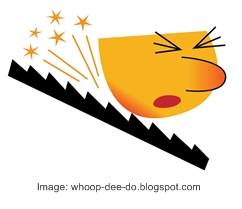As published to Entrepreneur
Wearable technology got its greatest initial growth in the fitness industry, and it’s come a long way since 1984’s Casio’s Databank calculator watches. The true line of demarcation was introduction of 2008’s original FitBit, with true industry validation and surge generated by the Nike Fuel band in early 2012.
Three years later, and investors are throwing themselves at both the hardware and software opportunities within the industry. Why wouldn’t they, in an industry expected to ship 171 million wearable devices by 2016?
But wearable technology has the ability to impact other industries, beyond fitness, as well.
1. Field service.
Gartner predicts wearables could save $1 billion in field service industry costs by 2017. For service people like technicians, plumbers, and mechanics, optical wearables can be used for photo and data collection and to present repair information while freeing up both hands. Head-mounted, wearable computers can also be used to overlay diagrams and schematics over equipment, and efficiently update equipment maintenance records.
This kind of real-time, on-site, data can be shared across organizational departments for better marketing and forecasting purposes. All this could lead to improved first-time fix rates, higher customer satisfaction and better reviews.
2. Insurance.
A recent study found 6 percent of insurers are either using or experimenting with wearable devices and technology, and a whopping 22 percent are developing business strategies for them. The type of data wearables collect is valuable to insurance providers.
Some experts anticipate wearables able to help calculate more accurate insurance rates. Whereas these devices can be used to collect valuable customer data enabling insurance companies to accurately and perpetually adjust their risk models.
Wearable technologies can lead to significant cost savings in the medical space, enabling insurers and physicians to gather patient health data around the clock. Detailed, real-time patient monitoring is both critical and highly valuable for preventative care and monitoring that can effectively reduce emergencies and tests.
3. Event management.
Managing different aspects of the guest interactions is a major effort for any event organizer. Wearable software can help manage guest lists, RSVPs, seating assignments, and provide guests with live updates. Paired with 3D visualizer software, wearables can help planners visualize an entire event to optimize crowd flow and other event space considerations.
All this could translate to you one day attending a highly organized wearable wedding. Fashion and technology expert Tito Chowdhury, the founder and executive director of FashionNXT, envisions a future where a smart bracelet-wearing bride, with a perfectly 3D fitted dress, remains warmed to the perfect temperature, all from the power of wearables.
4. Retail.
A recent study by Salesforce.com finds that wearable applications span security access for employees, to advanced loyalty programs for customers. Of those using the technology, 76 percent report an increase in business performance.
By examining the way wearable users move through the physical world, tools like Factual’s Geopulse Audience can identify repeat behaviors, match them to predefined audience segments, and anticipate user behaviors. Business adoption is expected to flourish as lower costs and devices that can better multitask come to market.



